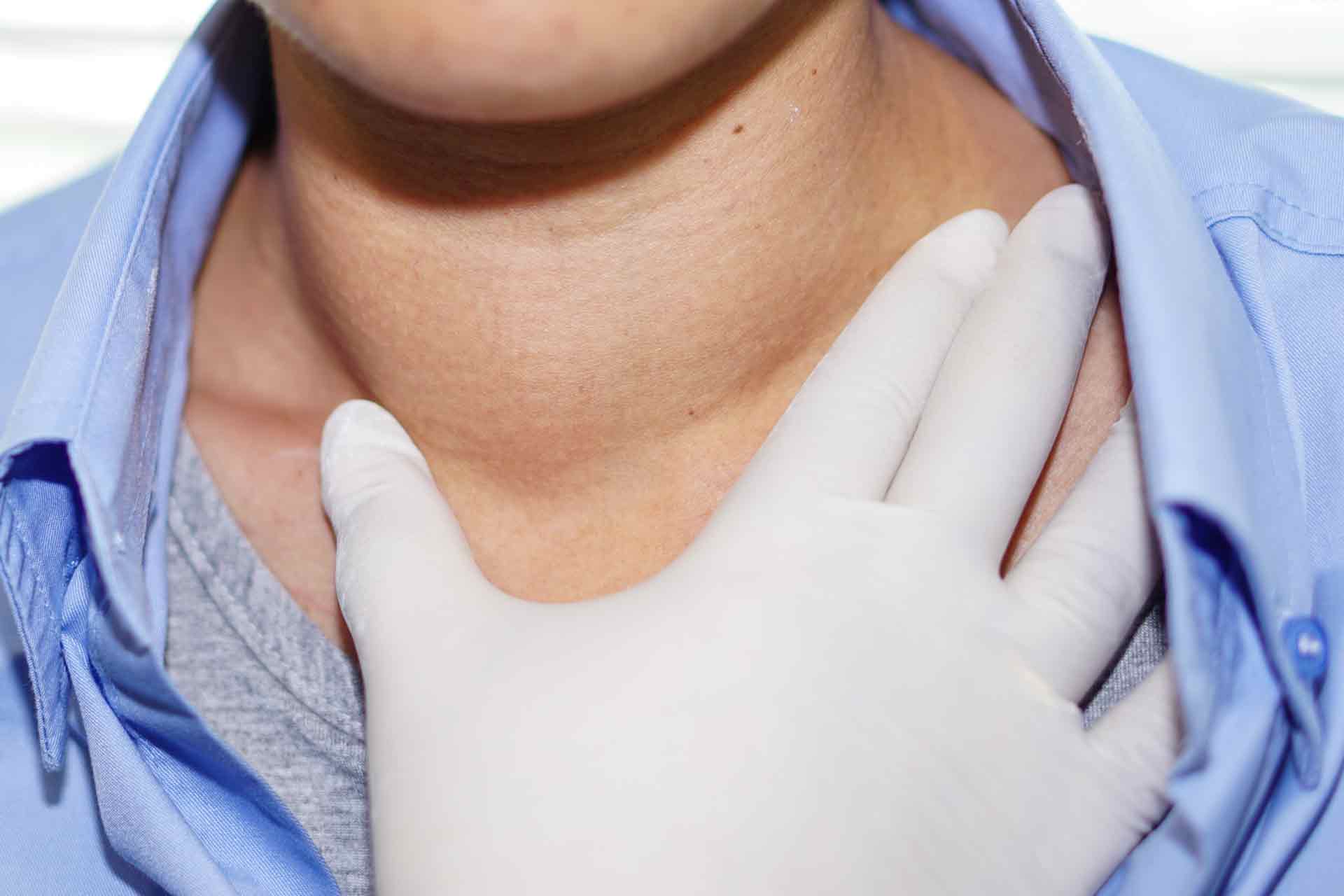桥本甲状腺炎
开幕总结
- 67
- The thyroidal inflammation noticed in Hashimoto’s is usually specific and most times accompanied with thyroid hormone imbalance with the presence of thyroid antigens. This imbalance causes an overall impairment of the thyroid, and the antigens counteract the biological functions of the thyroid antibodies.
- Thyroid blood tests are becoming phased out in the diagnosis of thyroid dysfunctions and evaluation of normal thyroid functioning. The Thyroflex Test is an innovative method considered to be more accurate and indicative of the nature and severity of the disease.
- An integrative therapy approach involving the systematic use of Bioidentical hormone and conventional drugs is currently regarded as the best management plan for Hashimoto’s.
在开始时,活动性疾病阶段的特征是反复出现的炎症反应,在某些情况下可持续数月或数年。此阶段自行解决。非进展期通过外科手术治疗。 临床表现和疾病概述
Within the Medical community, Thyroiditis is generally described as an abnormal inflammation of the Thyroid glands, resulting primarily in the impairment of the glands and an imbalance in the level of thyroid secretions. In most clinical presentations of thyroid disease spectrums, a common detail usually observed in diagnosis is chronic autoimmune inflammation of variable severity depending on patients’ health index and level of disease progression.
In Hashimoto’s Thyroiditis, the pattern of inflammation noticed is particularly specific. Pathogenesis of inflammation in this case starts with an abnormal lymphocytic infiltration into the intra-thyroidal space, causing a cascade of gradually progressing autoimmune inflammatory reaction. As a direct response to a resultant destruction of the thyroid parenchymal tissue, intra-thyroidal space is replaced with a mass of fibrous tissue which may or may not develop into a goiter.
Biochemical findings in different cases of Hashimoto’s disease presentations have shown evidence of the presence of thyroid antibodies (标签) produced in short bursts against the principal thyroid antigens –Thyroglobulin (g) and Thyroid peroxides (TPO). By a complex process of antibody-dependent cell cytotoxicity, thyroid antibodies destroy the primary cell components of the thyroid. The counter effect noticed reflects on the essential roles of the thyroid antibodies. The roles affected include iodination of tyrosine residues, iodine oxidation catalysis, and the biological coupling of iodothyrosines with triiodothyronine and thyroxine.
The production of antibodies integrated with the resultant impairment in thyroid functioning cause a significant increase in the levels of Thyroid-stimulating hormone (TSH). Symptoms presentation in humans suffering from Hashimoto’s are linked with primary Hypothyroidism. On further evaluation, the levels of total T4 and free T4 are found to be low when compared with level in humans with normal thyroid functioning.
Clinical manifestations of Hashimoto’s Thyroiditis can include, but not limited to myxedema –increased deposition of glycosaminoglycan on the skin, partial alopecia, epidermal thinning, Bradycardia, exertional dyspnea, unexplained fatigue, muscle weakness, and increased peripheral vascular resistance. In severe cases or poorly managed patients, symptoms noticed are far more debilitating. These can include memory loss, depression, dementia, menorrhagia (heavy menstrual bleeding) and peripheral neuropathy (numbness).
当前的诊断方法和治疗方法
With Hashimoto’s Thyroiditis and other thyroid conditions, there are many popular but inaccurate methods currently employed in diagnosis and eventual treatment. As far back as 1971, Dr R.I.S Bayliss, a famous endocrinologist with decades of practice in the clinical evaluation, diagnosis and treatment of thyroid conditions submitted his findings on the right diagnosis for thyroid conditions. He noted that only designed clinical assessments and not blood tests or TSH level evaluations can provide a foolproof diagnosis for the thyroid conditions.
Currently, clinics in different parts of the World diagnose Hashimoto’s thyroiditis and disease severity in established cases with evaluations of free T4 levels, serum TSH levels, Thyroid antibody levels TPOab, T3 levels and the controversial Thyroid Blood test. These tests are considered at best to be indicative of an onset phase of Hashimoto’s thyroiditis. The inadequacy of these tests for the clinical evaluation of Hashimoto’s thyroiditis and other thyroid conditions is embedded in the simple fact –only 18% of the thyroid hormones are found in the blood with about 75% found in the brain, skin and muscles.
桥本甲状腺炎合并甲状腺功能亢进的临床评价
Based primarily on the findings of Dr Bayliss, the Thyroflex test for the evaluation of Hashimoto’s Thyroiditis focuses on neurotransmitters and reflexes from the muscles and skin as the end artifact of thyroid function. Thyroflex test also considers Resting Metabolic Rate (RMR) with the range and severity of symptoms experienced by the patient.
In the Clinical assessment of Hashimoto’s Thyroiditis with Thyroflex, a patient fills out the Thyroflex Symptom Survey and the scores are expertly evaluated. Symptoms contained in this survey are drawn directly from the Endocrinologist Handbook. Patients with a hypo symptom (Subclinical Hypothyroidism) score exceeding 8 on the score sheet are considered to be symptomatically at risk and are referred for the Thyroflex test. However, patients are immediately considered to have a Thyroid condition if they present with a Hypo score exceeding 8, a low RMR, and a slow reflex time.
In autoimmune disease of the Thyroid, patients present with a Hypo score exceeding 12 and a Hyper score exceeding 7 coupled with tachycardia and/or palpitations. To accurately diagnose Hashimoto’s Thyroiditis with the Thyroflex Test, patients presenting with tachycardia and/or palpitations not cortisol-related on are referred for a Thyroid antibody test TPOab & TGab. Patients positive for only TPOAb (antibodies to thyroid peroxidase) are considered to have developed Hashimoto’s Thyroiditis. Some patients can also present with Graves’ or Hashitoxicosis –combination of Graves’ and Hashimoto’s.
桥本甲状腺炎的治疗方案
Various medical researches has revealed the potentials of early diagnosis and proactive treatment of Hashimoto’s Thyroiditis. When properly managed, disease progression can be delayed with an evidence of improved thyroid functioning. An Integrative treatment approach consisting of a combination treatment with Bioidentical hormone replacement therapy and traditional synthetic drugs is rapidly emerging.
Once a definite diagnosis is made, patients are withdrawn from gluten and sugar and subsequently placed on a Paleo diet – a diet mainly from fish, meat, legumes, fruits and vegetables. Following this, the patient is placed on synthetic T4 (Levothyroxine) and bioidentical hormones. Hormone choices are based solely on the patient’s needs and might include Cholecalciferol (D3), Iodine/Iodide, Pregnenolone, Dehydroepiandrosterone (DHEA) and low dose Naltrexone.
This integrative treatment is systematic and at some point requires the introduction of Desiccated Natural Thyroid (Biothroid). Patients are placed under close observation for symptoms improvement and Thyroid dose titration every 30 days until at dose. In clinical trials earlier conducted, results show a general improvement in symptoms, with the Hypo symptom score decreasing below 8 and the Hyper symptoms below 3. In most cases, patients attain remission within 30 days and are totally free of antibodies after one and a half years.
As a lifelong disorder, the management of Hashimoto Thyroiditis requires a well-designed treatment plan with a continuous clinical evaluation of symptoms improvement or otherwise.
参考资料
- www.ncbi.nlm.nih.gov/pmc/articles/PMC3271310/
- www。甲状腺.org / hashimoto-甲状腺炎/
- emedicine.medscape.com/article/120937-overview
- www.ncbi.nlm.nih.gov/books/NBK459262
- www.americanintegrative.com/hashimotos-甲状腺炎-疾病治疗/
- www.ncbi.nlm.nih.gov/m/pumed/28315909/
- www.thyroflex.com


